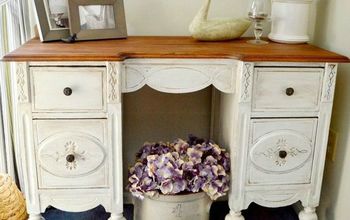How do you get rid of condensation in an interior chimney?

The chimney is no longer used and has been capped off. There is still moisture , in the upstairs bedroom, on the exterior wall of the chimney.
Related Discussions
How to get rid of mice?
We seem to have some unwelcome Mickeys and Minnies in our house. What is the best way to get rid of them?
How to remove popcorn ceiling with asbestos?
I want to remove my popcorn ceiling, but it has asbestos in it. How do I go about this safely?
How to caulk baseboard gaps?
How do I fill gaps at baseboard, should I caulk? If so, does anyone know how to caulk baseboards?
How to fix squeaky hardwood floors?
How do I fix squeaky hardwood floors?




Hi Catherine,
It could happen due to one of a couple of reasons. There could be cracks in the masonry itself that are letting in moisture. Another thought could be because you've upgraded your furnace. With older furnaces hot air goes up the chimney and keeps it dry. If you've replaced your furnace, the newer ones have less heat loss so less heat goes up the chimney to dry the air that is trapped inside. I'd suggest that you call a professional and have them inspect the chimney to see what can be done. Wishing you the best.
Wetness around a chimney to be due to the condensation of the airborne moisture in the exhaust gases discharged by the furnace on the cold chimney walls. The wetness on the outside faces of the chimney occurs when the condensate migrates through the mortar. Condensation of exhaust gases are evidenced or accompanied by one or more of the following: The pattern of wetness is relatively uniform on all the sides of the chimney exposed in the attic The wetness is more severe at the basement and/or the first floor than the second floor or the roof.
When a number of these characteristics are found, consider that the wetness and subsequent damage on and around the chimney may be due to the condensation of the exhaust gases and the migration of the condensate through the mortar.This issue may be addressed by replacing the furnace with one that exhausts through a wall, thus, not introducing exhaust gases into the chimney or by the installation of a non-corrosive flue liner. Contact a qualified and experienced heating contractor for more ideas.
The brick is cold. Warm air migrating inside the cavity can cause condensation. Warm air hitting the outside of the brick can cause condensation. Since it's no longer used you can pour or stuff insulation down the chimney. Glue insulation foam board or wrap the outside of the chimney. Frame out the chimney, insulate, then drywall.
It would seem you need a pro to take a look but you could try putting some foam at the top under the chimney cap and see if that helps/takes care of it first.